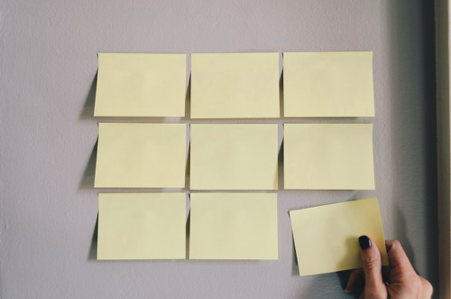Planning Your Eating
If you have an eating disorder, you may find it very difficult to know when you feel hungry of full. This makes it very difficult to judge how often to eat, and how much to have. Some people may never have a really good sense of this. It may help to think back to when you were a child, and see if you or your family members can remember if you always found it difficult to judge when and how much to eat. You might have always had a tendency to forget to eat if you were busy or distracted. You might have overeaten foods that you especially liked. It may be that your natural appetite control system will never give you really strong and clear signals.
It can be hard to feel confident about eating if you find your appetite signals are not clear. You may need to rely on a good framework to plan eating, and make sure you are healthy.
The information and ideas here can help you to find the right way for you to eat. It aims to help you to find a framework that gives you
This can help you to:

Understanding why you need structure for your eating
Every part of your body needs energy to work. This is especially important for vital organs that need a lot of fuel, in particular the brain. Both your body and your mind work best when they have a steady supply of energy, from regular meals and snacks.
If you go for long periods without eating, more than about 5-6 hours for most people, your body responds to deprivation by making changes to stop or slow down non-essential functions. You might notice some signs of this, such as feeling irritable, or that concentrating becomes difficult.
If you overeat, your body may be unable to respond quickly enough to overload, and eating too much in a short time can stress organs such as your liver, pancreas and stomach, sometimes causing long-term damage.
If you can eat in a similar way to the people around you, that will help you to feel more comfortable to join others for a meal or snack. Eating is part of most social relationships, and helps keep you connected to family and friends, and to build new friendships.
Structure for Your Day
If you have a framework in your mind for eating over the day, it can help you to:
It can also help you to be flexible to meet these needs in different ways at different times, so that you can:
This can help you to build confidence to meet your needs and preferences, without being too rigid and rule-bound. Most people take years to find the right structure for themselves, and to change it as needs change. It takes time and patience to find the way that works for you, so allow yourself to take it slowly, and get help when you need it. You might need to be ready to try a few experiments. You can feel safe to do this if you try small changes in a calm way, so the risk is not too big if it does not turn out to be quite right.
Once you have a structure that works for you, use it to adjust to changes in plans.
To build your personal framework, start by thinking about these questions. It may help to talk to other people who eat with you, and know your eating preferences. It is useful to note down your thoughts on each of these questions:
Except overnight, most people are most comfortable with a gap of 3-5 hours between meals and snacks. How often do you eat each day? What’s the most often that would be OK for you? What’s the least?
What times should you eat? How soon after getting up should you eat? What’s the longest you should go between meals and snacks? Should there be times when you do not eat?
Should you have a planned snack or drink if you wake in the night?
When is your main meal of the day? Is that the same every day?

Finding Your Routine
When you have your notes about what you need to include in your personal eating routine, begin to make some plans and try them out. Your routine may be the same on most days, or you may need a different routine for weekdays and weekends, or to fit different work or college times.
For most people, three meals and 1-3 snacks each day, is a pattern that works well. Even if your
work means changing shifts, or you travel across time zones, you can use that as a basis for planning.
Every day, aim to include:
Breakfast – usually the smallest meal of the day, and the one that is quick to prepare and eat. It doesn’t always have to be in the morning, it may work better for you at a different time on some days, especially if you work shifts
A main meal – usually the largest meal of the day, with at least two courses, and including cooked foods. It may not be at the same time every day, for instance, many people have a main meal in the evenings on work days, and at mid-day on Sundays with the family.
A light meal, perhaps sandwiches or salad, or a simple dish such as a filled jacket potato, with items such as yogurt, fruit, soup, cereal bar, nuts, crisps, cake. This meal may need to be portable, perhaps to take it to college or work.
A substantial snack, usually in the longest break between meals.
One or two small snacks, such as fruit or a milky coffee.
You can begin by thinking about the times of day that you might eat a meal or snack. It can be difficult to stick to exact times, so plan time slots, for instance you might plan your main meal to be any time between 6 and 8 pm. If you need to, you can begin by having something small in your chosen time slot. For example, if you are not used to having breakfast, you could start by making sure you have fruit or yogurt every day before 9 am.
Try planning your food and drinks for a day using this template. It’s easiest to start with a day that has a familiar routine if you can. You can make as many copies of the template as you want, to plan for different days. Use the notes you have already made to help you.
You need a meal in each section. You may also want a snack in some of them. You might like to note time slots.
MORNING
|
AFTERNOON
|
EVENING
|
When you have got used to your personal eating routine, you can use this template to plan for days when it may need to be different, for instance travelling or a special celebration.
You might find these interesting too!
A brief PEACE+ animation for people with ADHD and eating disorders. It explains how sensory, attention and interoceptive differences affect eating, and shares low-effort supports. Co-produced with clinicians and lived experience contributors.
On 20 May 2025, we welcomed over 250 attendees from across the UK and internationally to the fourth PEACE Pathway Conference. The day brought together clinicians, researchers, lived experience experts, and service providers to share knowledge and tools for improving care for autistic individuals with eating disorders.
A powerful animated short film that brings to life the stories of autistic girls and women in their own words.